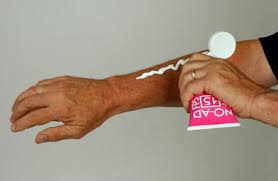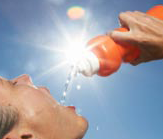Refueling after a long workout can have a positive impact on the effects of the exercise Replenishing the body's energy stores speeds up the recovery process, helping to prevent fatigue and low motivation before the next workout. The general guidelines are to consume a recovery snack within a few hours of completing an exercise session that lasts longer than 60-90 minutes. Our bodies usually have enough resources to compensate for exercise less than an hour, but sometimes the end of workout just happens to happily coincide with a scheduled snack time anyway. You might also want to experiment with snacks after shorter workouts if you exercise very frequently (daily, with some sessions occuring less than 24 hours apart), and find yourself performing poorly.
Caution: If weight loss is a goal, be careful not to over-compensate with your recovery snack, which can be easy to do.
The exact nutritional composition of a recovery snack is not critical for recreational athletes, and need not be an expensive formulated product or complicated recipe. A snack of approximately 200-300 calories of primarily carbohydrates with a small amount of protein will help most runners feel energetic again quickly. (Athletes training at intense levels or weight training will need more protein).

Smoothies are a great post-run snack. They are easy to make, use healthy, wholesome ingredients, and can be portion-controlled. The fluids aid in rehydration, and the blended consistency is easy on digestive systems that are irritated by exercise.
The Nutty Chocolate Banana Smoothie is a favorite at our house. We freeze sliced bananas ahead of time, making it a cold and refreshing drink. Blend 1 frozen banana with 1/2 cup nonfat milk and 1/2 cup low fat chocolate milk, and 2 tablespoons of reduced fat peanut butter. Although this comes in at just under 400 calories, modifying the quantity of peanut better to 1 tablespoon brings it down to 300 calories. Or share it with your run partner!
 |
An easy formula for smoothies is start with about 1 cup of liquid, and add frozen fruit until you get the desired consistency. Large bags of mixed organic fruit are convenient and economical, and give you a slightly different flavor every time. For liquids, try almond, soy or coconut milk, pure fruit juice or fruit necar. Experiment with combinations, such as 1/2 coconut milk and 1/2 pineapple juice (throw in some frozen peaches for fruit). For an extra protein boost, especially if only juice is used as the liquid, try adding Greek yogurt, protein powder, or even soft tofu. Juice, frozen berries, and tofu (about 1/2 cup) make a great frappe. |
Hand immersion blenders do a good job as long as the frozen pieces aren't too large, they don't take up too much space and are easier to clean than large jug blenders.
Looking for more ideas or unique concoctions? Check out The Smoothie Bible by Pat Crocker at your local library. It even has recipes for "hot" smoothies to try after a winter workout.





